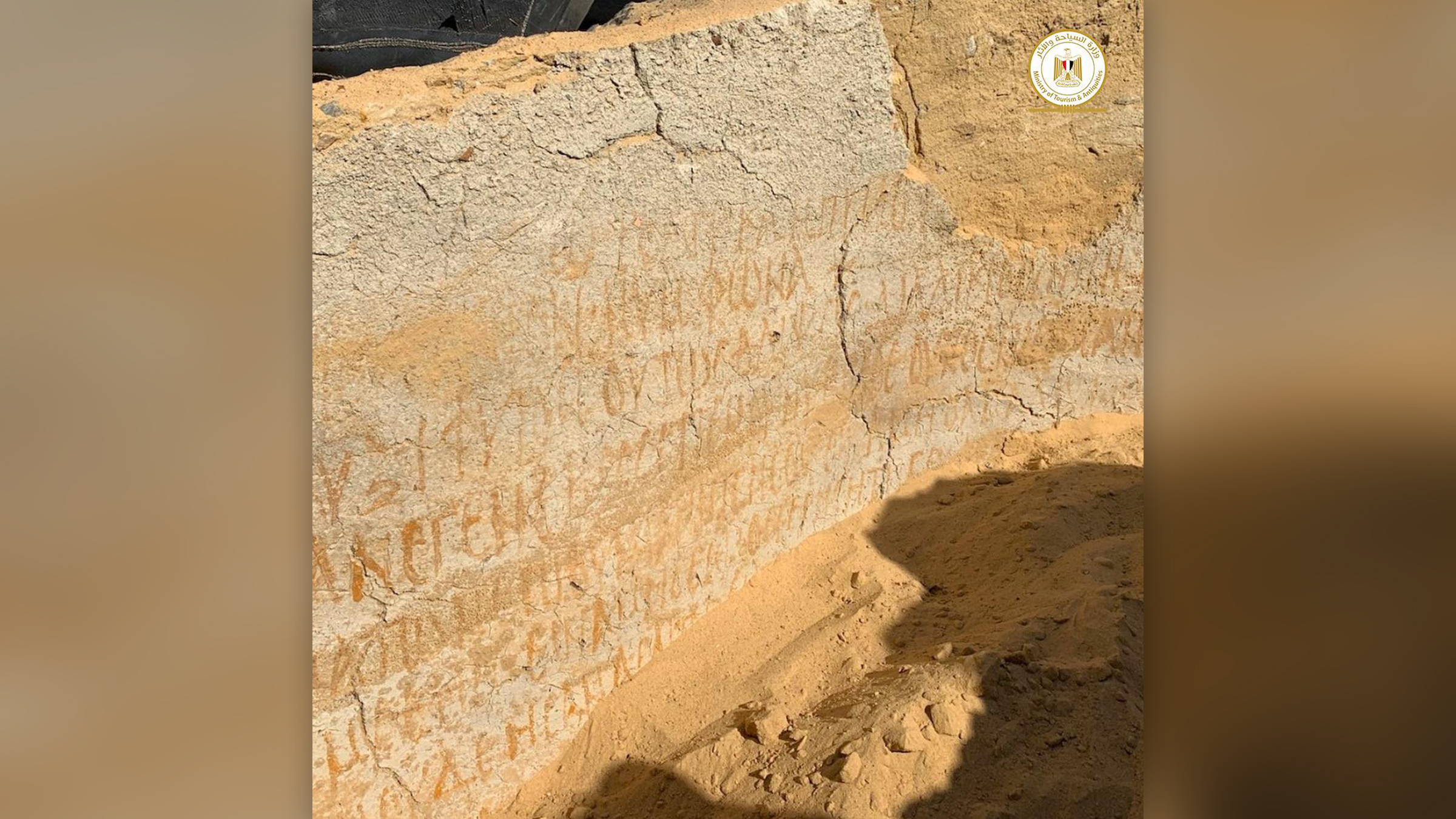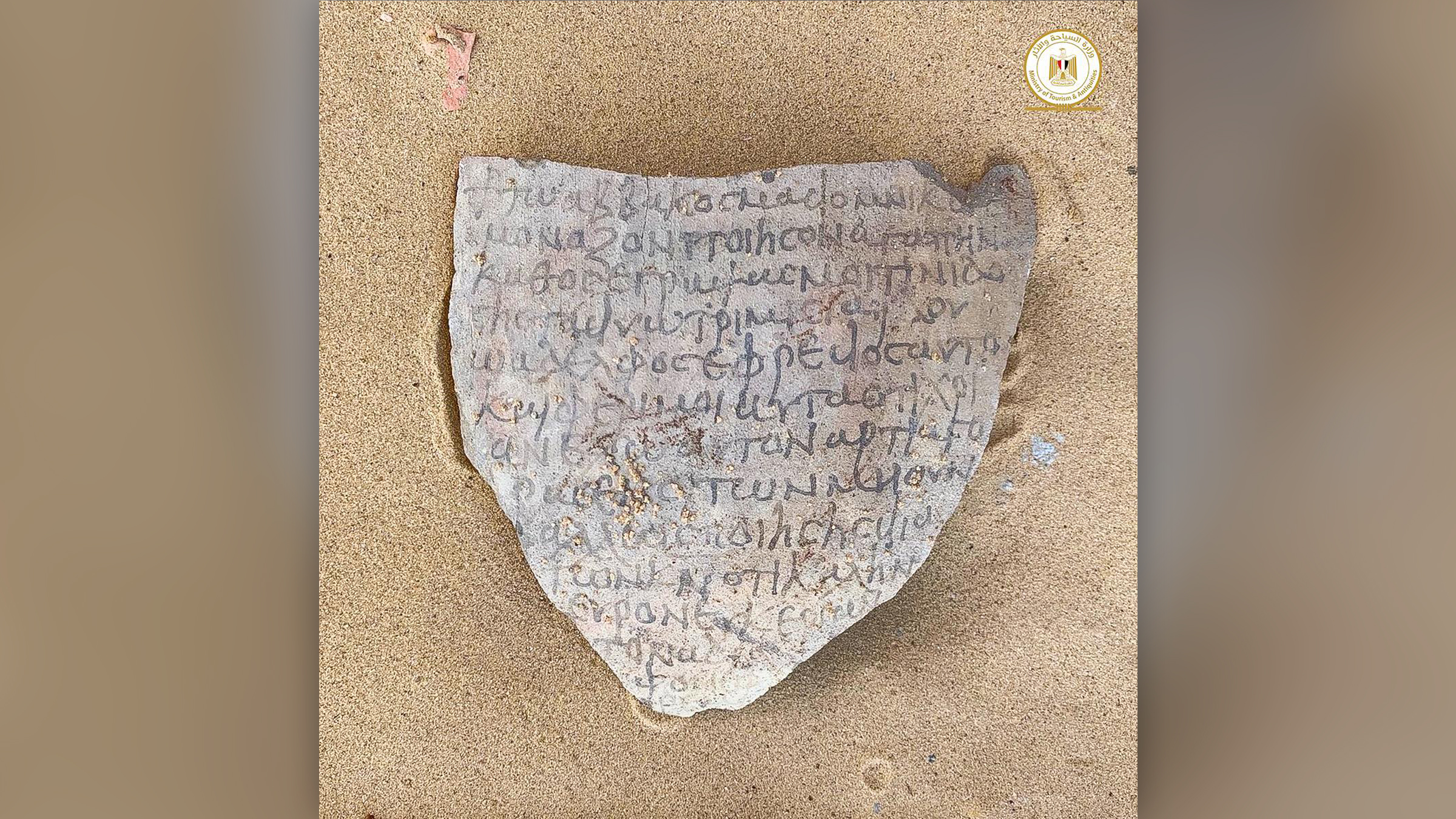Early Christian monks' quarters and churches found in Egypt
The monks scribbled on the walls, leaving Coptic graffiti.

Three early churches and their adjacent living quarters, some scrawled with ancient biblical graffiti, have been found in Egypt. The new discovery is shedding light on the life monks led within ancient Egypt's Coptic Church, according to the Egyptian Ministry of Tourism and Antiquities.
A Norwegian-French archaeological team found the fourth- to seventh-century A.D. buildings, which are made from mud brick, basalt stone and carved bedrock, in Bahariya Oasis, about 230 miles (370 kilometers) southwest of Cairo in the Western Desert of Egypt.
An analysis of the monks' living quarters revealed graffiti with Coptic connotations and symbols, said Osama Talaat, head of the Islamic, Coptic and Jewish Archaeology division at the ministry, in a translated statement released March 13.
Related: Image gallery: Female Egyptian mummy discovered
This isn't the team's first discovery in the region. In 2020, the archaeologists found 19 rock-carved chambers, as well as a church that also had graffiti. These graffiti were "writings in yellow ink that include religious writings from the Bible in Greek, reflecting the nature of the monastic life in the region," Victor Ghica, head of the mission and a professor of antiquity and early Christian studies at the MF Norwegian School of Theology, Religion and Society, said in the statement. The graffiti referred to a settlement of monks that had lived in the region since the fifth century A.D., he noted.



That structure also had a dining hall and residential rooms for the monks. Archaeologists at the site also found ostraca — pieces of pottery with Greek messages written on them, like an ancient text message — dating to the fifth and sixth centuries A.D.
These discoveries shed light on "the first monastic congregations in Egypt in this region," the ministry said in the statement.
Sign up for the Live Science daily newsletter now
Get the world’s most fascinating discoveries delivered straight to your inbox.
Originally published on Live Science.

Laura is the archaeology and Life's Little Mysteries editor at Live Science. She also reports on general science, including paleontology. Her work has appeared in The New York Times, Scholastic, Popular Science and Spectrum, a site on autism research. She has won multiple awards from the Society of Professional Journalists and the Washington Newspaper Publishers Association for her reporting at a weekly newspaper near Seattle. Laura holds a bachelor's degree in English literature and psychology from Washington University in St. Louis and a master's degree in science writing from NYU.









